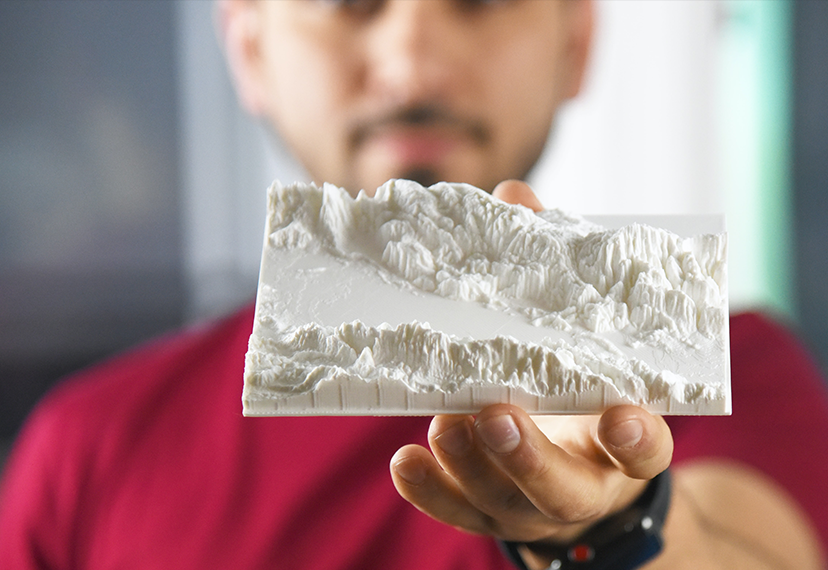Unlock the Secrets to Stunning 3D Prints at Your Fingertips!
In recent years, the world of 3D printing has exploded in popularity, offering a unique blend of innovation and accessibility. Online 3D printing services have made it easier than ever for individuals and businesses alike to create custom designs without the need for expensive equipment or extensive technical knowledge. Whether you’re an artist looking to prototype your latest creation, an engineer needing rapid prototypes, or a hobbyist eager to bring your ideas to life, the convenience of finding and purchasing these services online has opened up a world of possibilities. With just a few clicks, you can access a vast array of options that cater to different needs and budgets, making stunning 3D prints just a few steps away.

Understanding Online 3D Printing Services
Online 3D printing services operate by allowing customers to upload their 3D designs, which are then fabricated using various printing technologies and materials. These services cater to a wide audience—from individuals experimenting with 3D modeling to businesses in need of prototypes or short-run production. The benefits are numerous: you can save time and money by outsourcing your printing needs, access advanced printing technologies that you might not have in-house, and explore a variety of materials, such as plastics, metals, and even ceramics. Additionally, many services offer design support to help you refine your project before printing, ensuring that the final product meets your expectations. As a result, the online 3D printing landscape has become a go-to resource for anyone looking to turn their digital concepts into tangible objects.
How to Choose the Right 3D Printing Service
When selecting an online 3D printing service, it’s crucial to consider several factors to ensure you receive the best quality and service for your needs. First, research the quality of prints produced by different services. Look for customer reviews and sample prints to gauge their capabilities. Turnaround time is another critical aspect; some projects may require quick delivery, while others can afford a longer production timeline. Customer service is equally important; a responsive and knowledgeable support team can make a significant difference, especially if you encounter issues or have questions during the process. Furthermore, consider the range of materials and technologies offered. Some services specialize in specific printing techniques, which might affect the durability and appearance of your prints. Don’t hesitate to reach out for quotes or ask questions before making your decision, as a little communication can help prevent potential pitfalls down the road.
The Process of Ordering 3D Prints Online
Ordering 3D prints online typically involves a straightforward process, but being aware of the steps can make your experience smoother. Start by preparing your 3D file, ensuring it meets the service’s specifications. Common file formats include STL and OBJ. Once your design is ready, upload it to the chosen service’s website, where you can often preview your model and select the desired material and finish. Afterward, you will receive a quote based on your selection. After confirming the order and making the payment, the service will begin the printing process. Keep an eye on your email for updates on the progress and shipping details. Common pitfalls to avoid include not double-checking your design for errors before uploading and neglecting to read through the service’s guidelines, which can lead to unexpected costs or delays.
Exploring the Future of 3D Printing Services
The future of 3D printing services is bright, with continuous advancements reshaping the industry. Emerging technologies are enhancing the capabilities of 3D printing, allowing for more intricate designs and diverse materials. For instance, bioprinting is opening doors to medical applications, such as creating tissue and organ models for research and potential transplant solutions. Customization options are also expanding, enabling consumers to create highly personalized products that cater to their specific needs. Industries like aerospace, automotive, and fashion are increasingly incorporating 3D printing into their production processes, capitalizing on its ability to reduce waste and streamline manufacturing. As these trends evolve, we can expect online 3D printing services to become even more integrated into various sectors, making it an exciting time to explore this technology.
Exploring Creative Opportunities with 3D Printing
In summary, online 3D printing services have revolutionized the way we create and access custom designs. By understanding the landscape of these services, choosing the right provider, and navigating the ordering process, you can unlock a world of creative possibilities. As technology continues to advance, the potential applications and benefits of 3D printing will only expand, making now the perfect time to explore your options. Whether you're looking to prototype a new invention or create a unique gift, stunning 3D prints are truly at your fingertips!








